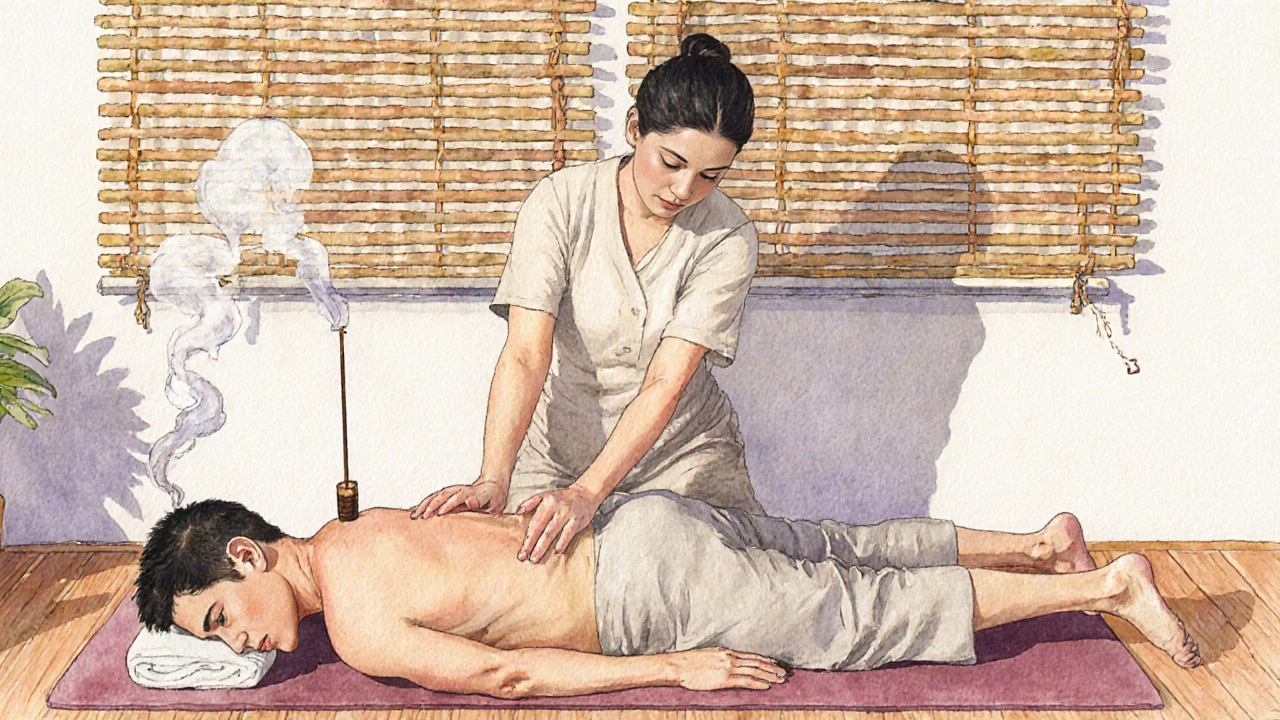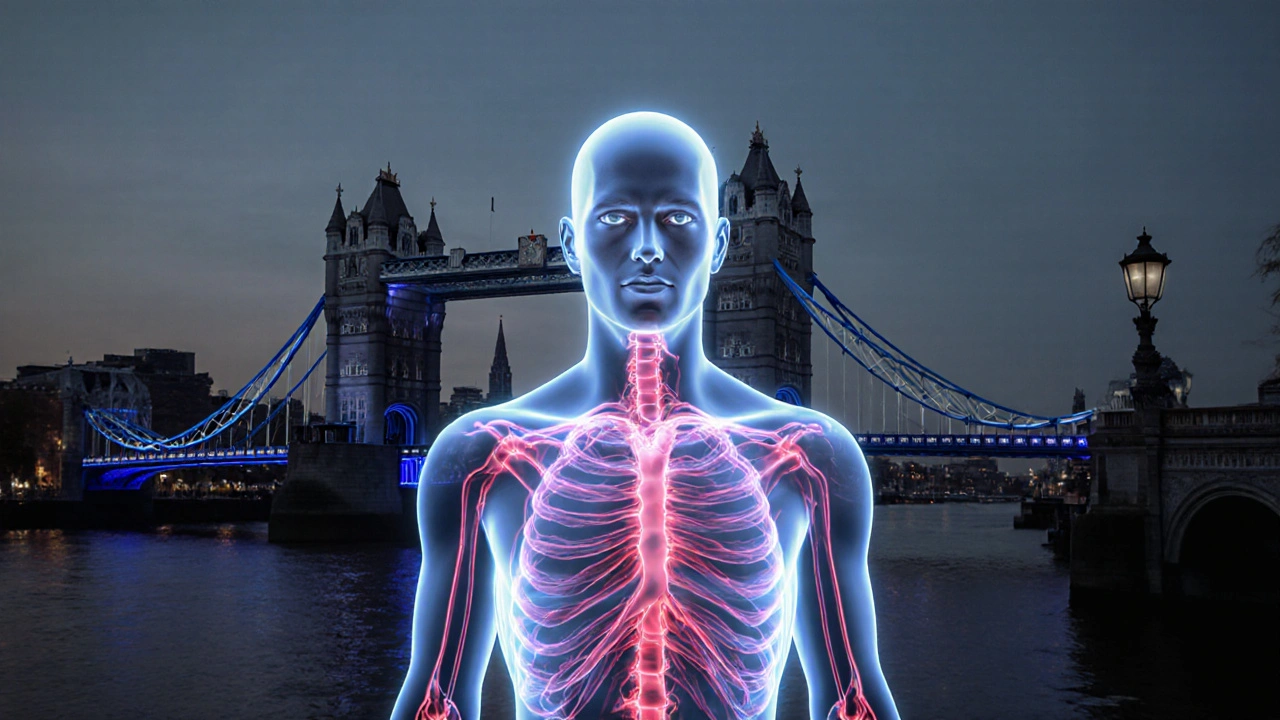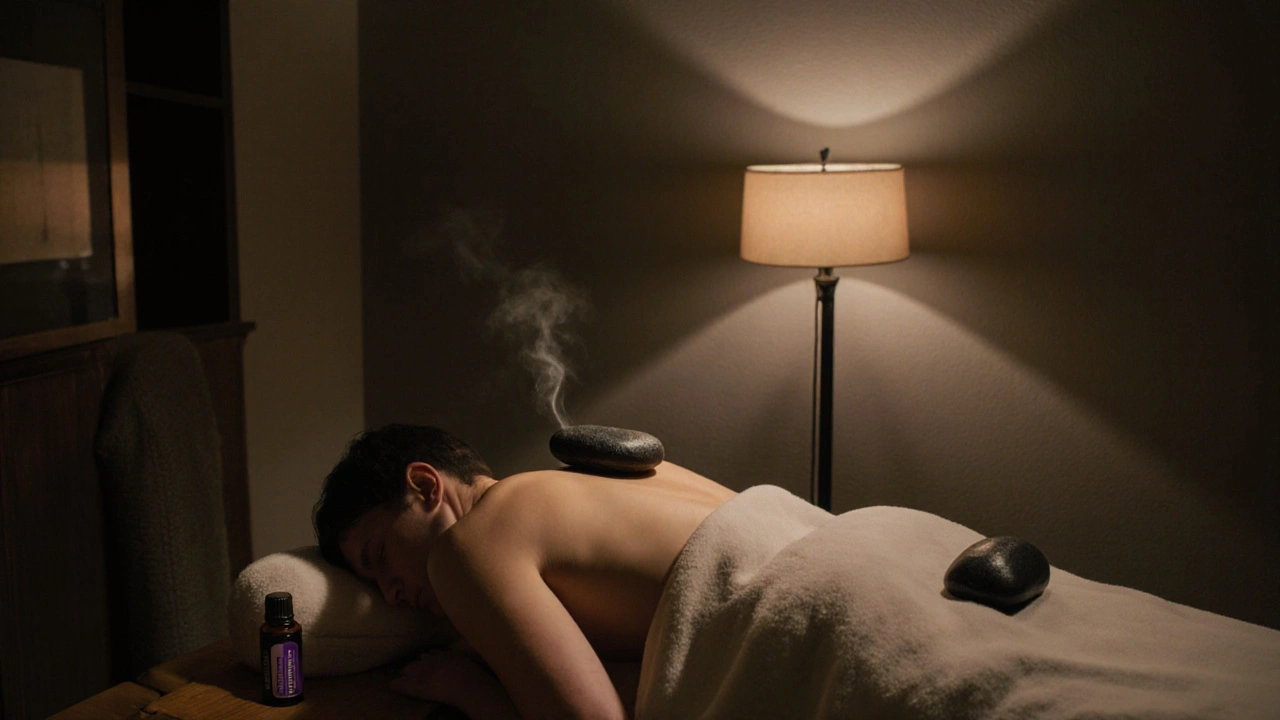The Ultimate Relaxation: London’s Leading Massage Therapy Spas and Techniques

If you’ve ever walked through London after a long day-buses delayed, meetings running late, the weight of the city pressing on your shoulders-you know how badly your body needs to reset. Not just a quick stretch or a coffee break. Real, deep, soul-level relaxation. That’s where professional massage therapy in London comes in. It’s not a luxury. It’s a necessity for anyone trying to stay sane in one of the world’s busiest cities.
What Makes London’s Massage Therapy Different?
London doesn’t just offer massages. It offers experiences shaped by decades of wellness innovation, cultural fusion, and high standards. You won’t find the same cookie-cutter sessions here that you’d get in a chain spa elsewhere. The best therapists in London tailor every session to your body’s story-whether you’re a runner with tight hamstrings, a desk worker with a stiff neck, or someone just trying to quiet a mind that won’t switch off. Therapists here train in multiple modalities: Swedish, deep tissue, Thai, hot stone, and even traditional Indian head massage. Many have backgrounds in physiotherapy or sports medicine. Some specialize in chronic pain relief. Others focus on stress reduction through aromatherapy and breathwork. The difference isn’t just technique-it’s intention.The Top Five Massage Therapies in London (And Who They’re For)
- Swedish Massage - The classic. Long, flowing strokes, gentle pressure. Perfect if you’re new to massage or just need to melt away daily tension. Ideal for first-timers or anyone feeling mentally drained.
- Deep Tissue Massage - Not for the faint-hearted. Focused pressure on deeper muscle layers. Great for athletes, people with posture issues, or those with knots that won’t budge. One client told me she’d been carrying shoulder pain for three years-three sessions fixed it.
- Hot Stone Massage - Smooth, heated basalt stones placed along your spine, between toes, over tight muscles. The warmth sinks in like a slow exhale. Best for people with poor circulation, arthritis, or anyone who feels cold even in summer.
- Thai Massage - You stay fully clothed. The therapist uses their hands, elbows, and feet to guide you through stretches. It feels like yoga with a human guide. Excellent for flexibility, energy flow, and people who hate lying still.
- Aromatherapy Massage - Essential oils like lavender, eucalyptus, or bergamot are blended into the oil. The scent works on your nervous system before your skin even feels the touch. Ideal for anxiety, insomnia, or anyone needing emotional reset.
Most top-rated studios in London let you mix and match. You can start with hot stone, add deep tissue to your lower back, and finish with lavender oil. No rigid packages. No upsells. Just what your body actually needs.
Where to Find the Best Massage Therapy in London
You don’t need to go to Mayfair or Knightsbridge to get a great massage. Some of the most skilled therapists work out of quiet, unmarked rooms in residential areas-Brixton, Hackney, Notting Hill. The trick is knowing where to look.- Therapy Collective (Soho) - A team of seven licensed therapists with backgrounds in physiotherapy and sports rehab. They track your progress over time. No two sessions are identical.
- Lotus Bodywork (Camden) - Specializes in Thai and Shiatsu. The owner, Meera, trained in Chiang Mai and brings a quiet, meditative energy to every session. Book early-she’s booked six weeks out.
- Urban Retreat (Notting Hill) - Focuses on aromatherapy and stress relief. Their signature blend of chamomile and frankincense is so effective, many clients say they sleep better for days after.
- The Stone House (Richmond) - Hidden behind a garden gate. Only three treatment rooms. Uses locally sourced hot stones and organic oils. Their 90-minute deep tissue session is the most requested in West London.
- London Massage Co. (Online Booking Only) - A newer player, but they’ve cracked the code: transparent pricing, no hidden fees, and therapists who send a short post-session email with stretch tips. Their 60-minute Swedish massage is £75-fair for central London.
Don’t be fooled by flashy websites. The best therapists don’t spend money on ads. They rely on word of mouth. Ask around. Look for reviews that mention specific results: “My migraines stopped,” “I could finally sleep on my side,” “I didn’t know my hips were that tight.” Those are the real indicators.

What to Expect in Your First Session
Your first massage isn’t about getting a quick rubdown. It’s a conversation. You’ll start with a quick intake: where you feel pain, what’s been going on in your life, any injuries, whether you’re pregnant or have sensitive skin. A good therapist will ask about your sleep, your stress levels, even your work posture. They’re not just treating muscles-they’re treating your lifestyle. You’ll be asked to undress to your comfort level. Most people keep their underwear on. Sheets and towels cover you at all times. No one is ever left exposed. The therapist will leave the room while you get settled. Then they’ll return quietly, check in, and begin. You don’t have to talk unless you want to. Silence is normal. In fact, it’s part of the therapy. Afterward, you’ll be offered water. Some places give you a stretch guide. Others just say, “Go easy today. Your body’s healing.” That’s it. No push to book again. No upsell. Just respect.How Often Should You Get a Massage?
There’s no magic number. But here’s what works for most Londoners:- Once a month - For general stress relief, maintenance. Keeps tension from building up.
- Every two weeks - If you have a physically demanding job, train regularly, or deal with chronic pain.
- Once a week - For people recovering from injury, surgery, or extreme burnout. Not sustainable long-term for most, but life-changing in crisis.
Many therapists offer loyalty discounts after five sessions. Some even let you pay monthly for a set number of treatments-like a gym membership for your muscles.

Red Flags to Watch Out For
Not every place calling itself a “massage therapy studio” is legit. Here’s what to avoid:- Therapists who don’t ask about your health history.
- Places that pressure you to buy packages upfront.
- Staff who use terms like “erotic,” “sensual,” or “adult” massage-those aren’t therapy. They’re illegal.
- Locations with no clear address or no licensed practitioners listed.
- Prices that are way below market (under £40 for 60 minutes in central London). You’re paying for training, time, and care-not a quick rub.
London has strict regulations. Legitimate therapists are registered with the Complementary and Natural Healthcare Council (CNHC) or the Federation of Holistic Therapists (FHT). Ask to see their credentials. Any good therapist will be happy to show them.
Why Massage Therapy Isn’t Just a Treat-It’s Medicine
A 2023 study from King’s College London tracked 200 people who received weekly massages for three months. Those with chronic lower back pain saw a 57% reduction in pain intensity. People with anxiety reported 44% fewer panic episodes. Sleep quality improved across the board. Massage isn’t about spa vibes. It’s about physiology. It lowers cortisol. Increases serotonin. Improves lymphatic flow. Reduces inflammation. It’s one of the few non-pharmaceutical interventions with peer-reviewed proof of impact. In London, where stress is a default setting, massage therapy is preventive healthcare. It’s not an indulgence. It’s a tool.Final Tip: Make It a Habit
The people who get the most out of massage therapy aren’t the ones who go once a year for a birthday treat. They’re the ones who treat it like brushing their teeth. Regular. Non-negotiable. Try this: Block out one 60-minute slot every month on your calendar. Treat it like a doctor’s appointment. Canceling it means you’re prioritizing something else over your health. And you wouldn’t skip a dentist visit because you were “too busy,” right? London moves fast. But your body doesn’t have to. Let it rest. Let it recover. Let it feel human again.Is massage therapy in London expensive?
Prices vary by location and therapist experience. In central London, a 60-minute session typically costs between £65 and £95. Outside the center, you can find sessions for £50-£70. High-end spas may charge £120+, but most reputable therapists offer fair rates. The key is value-not cost. A £70 session with a skilled therapist who listens and adjusts to your needs is worth more than a £100 session where you feel rushed.
Can I get a massage if I’m pregnant?
Yes, but only with a therapist trained in prenatal massage. Many London clinics specialize in this. They use side-lying positions, avoid certain pressure points, and use oils safe for pregnancy. Prenatal massage can reduce swelling, ease back pain, and improve sleep. Always tell your therapist you’re pregnant-even if you’re early stage.
Do I need to be naked during a massage?
No. You’re always covered with towels or sheets. Most people keep their underwear on. The therapist only uncovers the area they’re working on, and never your private areas. If you’re uncomfortable, say so. A good therapist will adjust immediately. Your comfort is part of the treatment.
How long does a massage session usually last?
Most sessions are 60 or 90 minutes. Some places offer 30-minute express sessions for neck and shoulders, but these are more of a quick relief than true therapy. For real results, aim for at least 60 minutes. That’s enough time for the therapist to assess your body, work deeply, and give you space to relax.
What’s the difference between a massage therapist and a spa masseuse?
A massage therapist has formal training, often in anatomy, physiology, and pathology. They’re licensed and regulated. A spa masseuse might have done a weekend course. In London, look for CNHC or FHT registration. That’s your guarantee they know what they’re doing-and that they won’t accidentally hurt you.
If you’re ready to feel like yourself again-calm, grounded, physically at ease-London has the right place for you. You don’t need to travel far. You just need to show up, lie down, and let your body remember how to relax.



alyssa golightly
November 2, 2025 AT 16:48I came to London from Texas thinking I’d never find a good massage here-turns out, I was wrong. The Stone House in Richmond? Life-changing. I went in with lower back pain from sitting at a desk for 12 hours a day. Left feeling like I’d been reset. No hype, no push to buy packages. Just quiet, skilled hands and a room that smelled like pine and peace. I go every three weeks now. My spine thanks me.
Hannah Ronquillo
November 2, 2025 AT 23:40So many people think massage is just for relaxation, but it’s honestly one of the best tools for chronic pain management. I had sciatica for over a year-physical therapy helped, but nothing stuck until I started weekly deep tissue with a CNHC-registered therapist. The 2023 King’s College study? Totally real. My pain dropped 60% in six weeks. It’s not magic. It’s science.
Tim Paradis
November 3, 2025 AT 09:06Massage therapy is overrated. You’re paying someone to touch you. Any buddy with a bottle of oil and a YouTube tutorial can do that. Stop romanticizing it. If your body hurts, go to a doctor. Not a spa.
Darshan R
November 4, 2025 AT 10:47As someone from India who’s had Ayurvedic and traditional head massages since childhood, I was skeptical about Western massage at first. But London blends cultures so well. The Thai massage at Lotus Bodywork? It felt like my grandma’s hands mixed with a yoga instructor who knows anatomy. I cried during my first session-not from pain, but from relief. You don’t need to be rich to heal. You just need to be willing to lie still. 🙏
Leanne McNally
November 6, 2025 AT 04:25Oh cool so massage is now medicine? Next they’ll say drinking wine is a clinical intervention for stress. I mean… sure. If you’re gonna pay £80 to be rubbed with lavender oil and told to breathe, fine. But don’t act like it’s a cure-all. My cousin got a 90-minute hot stone and still cried at her job interview the next day. 😅
Kristina Mozdzierz
November 7, 2025 AT 14:12While I appreciate the thoroughness of this article, I must emphasize the importance of regulatory compliance when selecting a massage therapist. The distinction between licensed practitioners and unregulated service providers is not merely procedural-it is a matter of safety, liability, and ethical care. I would urge readers to verify credentials through the CNHC or FHT prior to scheduling any appointment. Professionalism in this field is non-negotiable.
Mrigank Srivastava
November 8, 2025 AT 05:57I’ve had three massages in London. Two were fine. One was terrible-therapist kept talking about her dog. I didn’t ask for her dog’s life story. I asked for my shoulders to stop screaming. Silence is not empty. It’s sacred. Stop filling it with chatter. Just work.
Matt Ferry
November 8, 2025 AT 22:05Everyone’s acting like London’s the only place that gets massage right. Try Vancouver. Or Berlin. Or even a decent place in Brooklyn. This feels like a love letter to a few therapists who happen to have good SEO. The truth? Good massage exists everywhere. You just have to stop searching for the ‘perfect’ one and start trusting your own body.
Kristin Kuchenbecker
November 10, 2025 AT 11:57I’ve been seeing the same therapist for 18 months now. She remembers my coffee habit, my bad posture from typing, and how I always tense up when I hear sirens. She doesn’t just fix my muscles-she holds space for me. That’s rare. That’s healing. That’s not just a massage. That’s a relationship. And yes-I cried again last week. Not because it hurt. Because I finally felt seen.
Richard Reyes
November 12, 2025 AT 06:01Thank you for highlighting the distinction between licensed practitioners and unregulated providers. As someone who works in healthcare compliance, I’ve seen too many cases where untrained individuals cause harm under the guise of ‘relaxation.’ The CNHC and FHT registries exist for good reason. I encourage all readers to request credentials-not as a formality, but as a non-negotiable standard of care. Your body deserves nothing less.